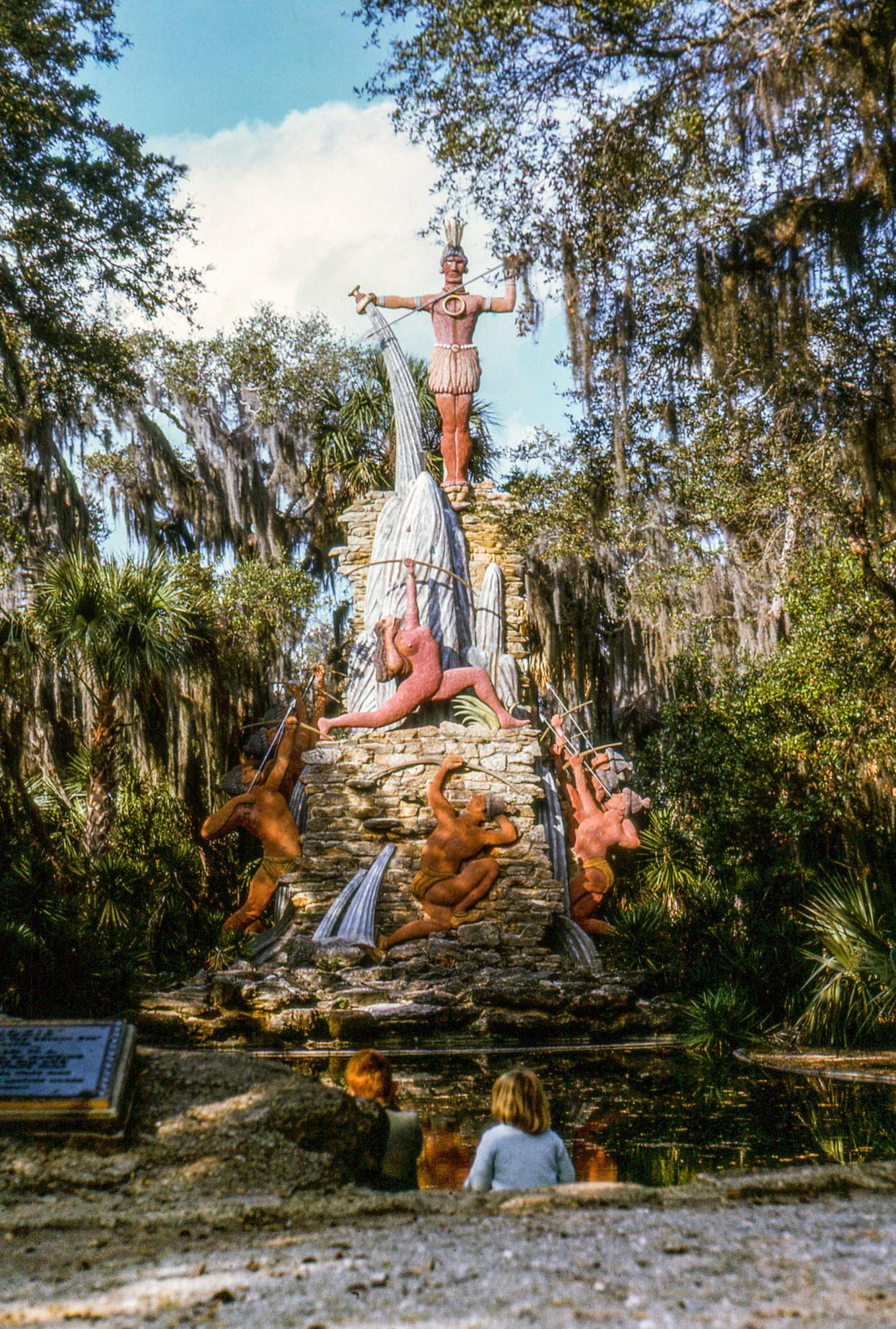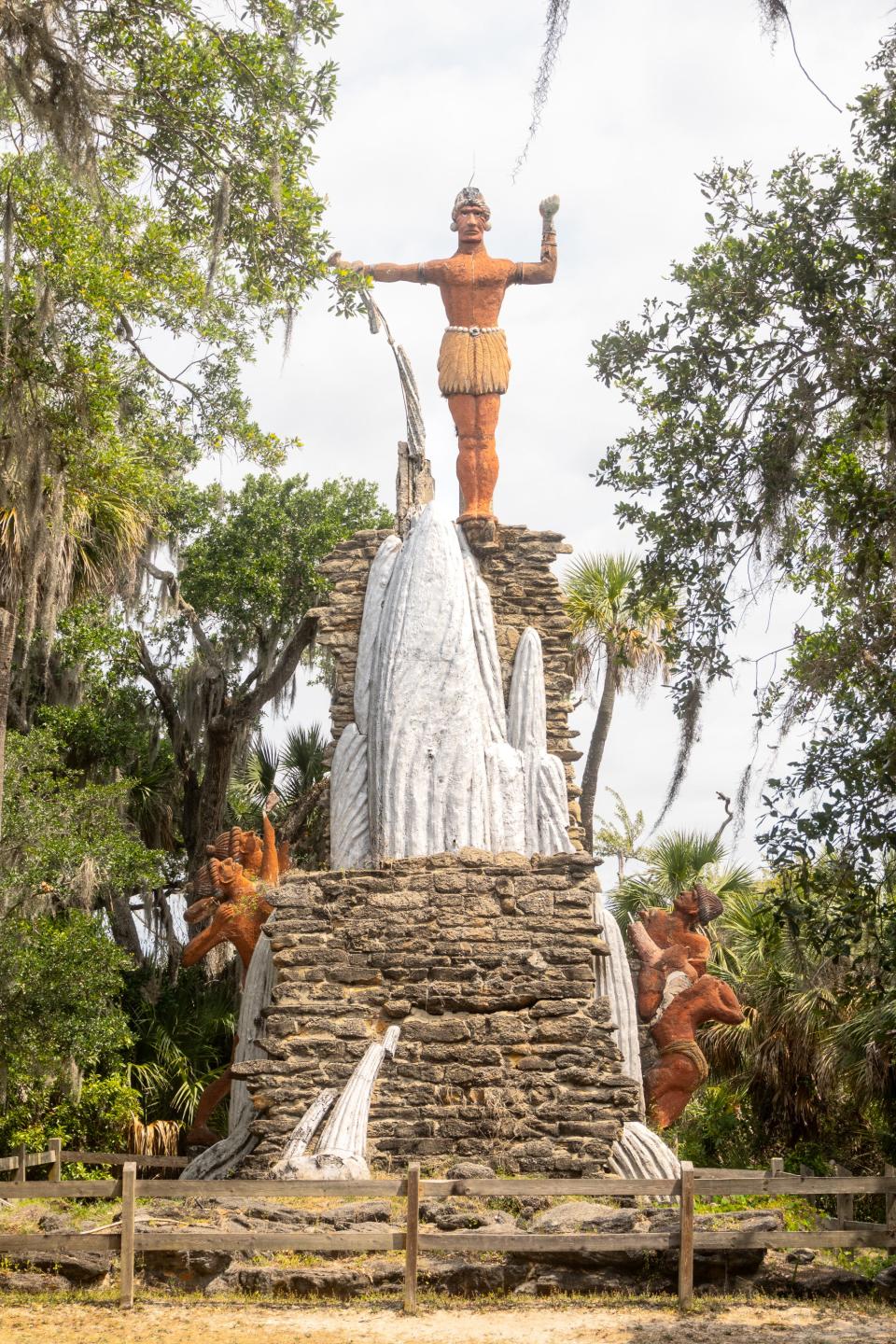Mark Lane: Save our weird, old statue!

The neglect and slo-mo demolition of the Chief Tomokie statue at Tomoka State Park have dismayed longtime locals over the years.
The striking 45-foot statue was dedicated with some fanfare on March 21, 1957. Crowds turned out. The Florida Symphony Orchestra performed. Local boosters crowed that it was the kind of attraction that visitors would extend their stays to see.
Now, the statue is a puzzling ruin to visitors. The reflecting pool in front of it was drained in the 1970s. The figure of Oleeta, a nude and murderous Amazon, was removed in 2002 after vandals decapitated it. (They served prison time.) One of its man-bunned bowmen is also missing in action.

Storms, hurricanes and climbing tourists have banged up the artwork over the years. Tomokie’s spear is gone, so it looks like he’s shaking his fist at the fates that left him looking this way. A sad sight.
More: Tomoka Park, since 1918 a place to picnic and boat
But a few people have recently come to the artwork’s defense. A Chief Tomokie Preservation Group formed a few years back now is pushing to get the artwork on the 11 to Save list, an annual listing by the Florida Trust for Historic Preservation. The list draws attention to endangered structures and landmarks. The Ormond Beach City Commission agreed to send a letter of support.
And the Chief Tomokie group’s Facebook page now boasts about 200 followers. The group’s goal is to get the state to restore the statue to something closer to its former glory.
The statue depicts, let’s face it, a flamboyantly fake legend about the native peoples that features a Fountain of Youth story. Marie E. Mann Boyd, daughter of Halifax Journal editor Florian Mann, related it in a booklet about local history in 1920. She identified Tomokie as the “chief of the Caribs” (Caribs didn’t live in this part of Florida) and claimed “his giant remains” had been discovered on Anastasia Island (they weren’t). The story was further embellished over the years and became more associated with this spot along the Tomoka River, a place that was home to the for-real Timucua, a tribe wiped out in the 18th century by disease and war.
The statue shows Oleeta aiming an arrow at the chief with murderous intent. On either side of the coquina column, warriors are poised to take her out. As Boyd related, a neighboring tribe turned on Tomokie for the sacrilege of drinking the Water of Life from the Sacred Cup because, well, who would want to put up with that?
“In years to come, thousands will look across the pool to where the gigantic Tomokie, a ferocious expression upon his face, pours water from the sacred cup he wantonly defiled while the outraged Princess Oleeta aims an arrow at his heart, herself about to be stricken down by the chief’s” warriors,” a News-Journal editorial hopefully predicted in 1957.
The statue was designed and built by sculptor, painter, illustrator and muralist Fred Dana Marsh. The original model looked dramatic and art-deco-ish but changed somewhat in the course of its large-scale realization. The sleek lines of his other works didn’t reproduce as well in concrete and brick dust. Marsh’s dedication to local materials —bamboo struts and brick dust made from Tomoka riverbank clay — may have worked against the statue’s longevity and were not easy to work with.
The result is that the chief looks like an angry, primitive version of Bert from Sesame Street, and Oleeta seems a bit bloaty and orange. No way around it, this is not a lovely artwork. Yet it does exude a flamboyant quirkiness that feels very Florida.
“It’s an iconic piece of our childhood and a Daytona area that’s disappearing,” said Julia Truilo, who is working with the group to bring attention to the statue’s condition.
Sure, the statue is defiantly odd. Which is why I enjoy showing it off to visitors who always admit they’d never seen anything quite like it. There is only one statue of Chief Tomokie and the state needs to look after it better.
Mark Lane is a News-Journal columnist. His email is mlanewrites@gmail.com.

This article originally appeared on The Daytona Beach News-Journal: Mark Lane: Save our weird, old statue!

